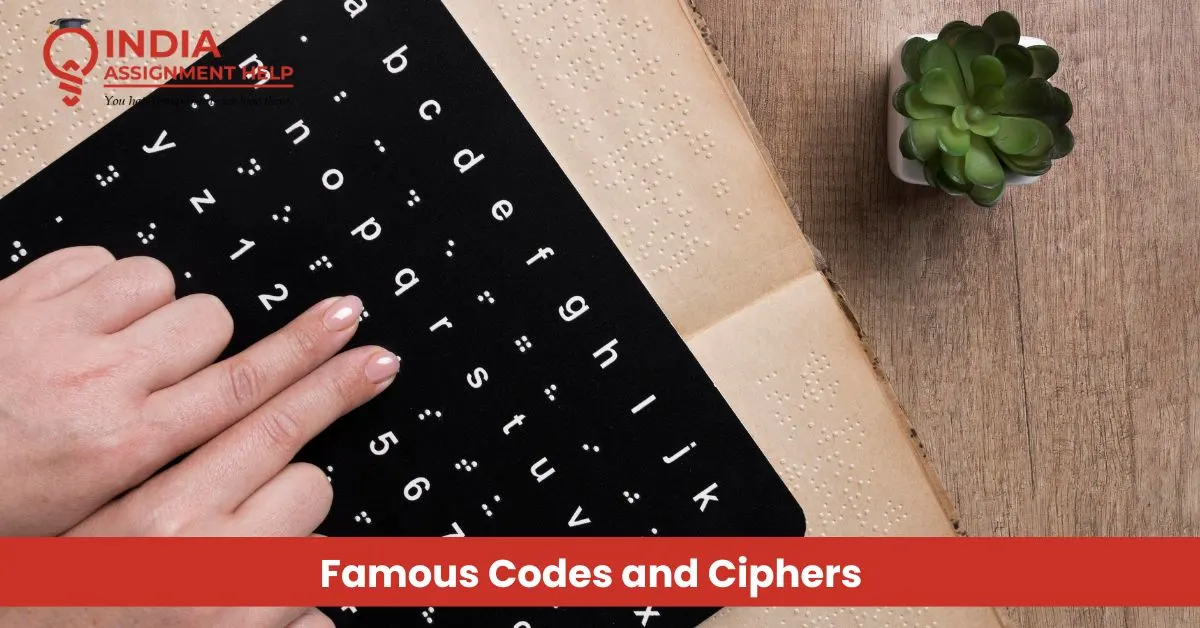Famous Codes and Ciphers

Cracking the Secrets: Famous Codes and Ciphers That Changed the World
Codes and ciphers mark the center part of most thrilling mysteries in history, secret missions that brought people together, and modern-day cybersecurity. From ancient techniques of hiding messages to the latest advancements of public-key cryptography, message-hiding techniques have sparked excitement in the minds of people for centuries. In this article, we will look in detail at some of the famous codes and ciphers ever created, learn how they operate, and examine their role in shaping artificial human history.
The Art of Cryptography: More Than Just Secret Messages
Cryptography, or encoding and decoding transmittable messages, evolved with the ages. The simple transposition ciphers of ancient Greece have come a long way to modern-day sophisticated algorithms in cybersecurity, yet cryptography permeates all those aspects by guarding sensitive information.
With that, we come to the main meat, but before going anywhere near that, let's point out the different codes and ciphers:
- Codes: These are the substitution of words or phrases by other words alone or by their numerical or symbolic equivalents so as to take the meaning away.
- Ciphers: This deals with the mathematical or systematic twisting of letters and numbers to conceal the true form of a message. In this way, let's now see some of the most historically famous codes and ciphers from the past that now govern a fair part of the digital future.
Ancient Ciphers: The Foundations of Encryption
1. The Pigpen Cipher: A Simple but Effective Code
One of the most recognizable kinds of ciphers, the Pigpen Cipher, replaces letters with symbols derived from a gridwork design. Used by Freemasons and even in children's secret clubs, this cipher possesses a certain charm on account of its simplicity and aesthetic appeal.
2. The Skytale Cipher: Ancient Greece’s Military Encryption
The Skytale Cipher is understood to be an ancient military communication method that was used in Spartan times. It involved wrapping a strip of some parchment around a specific cylindrical object, and then the letters were inscribed on it along its length. On unwrapping, the letters appear as jumbled, and thus the written message is indecipherable without the correct size of cylinder matching that of the initial one.
Want to Try?
Write a short message on a ribbon, wrap it around a cylindrical object (like a pencil), and see how the letters realign when you unwrap it. Congratulations, you’ve just used a cipher from 2,500 years ago!
Famous Codes and Ciphers That Altered History
1. The Enigma Machine: Breaking Nazi Germany’s Secret Code
The Enigma Machine, one of the most legendary coding devices in history, was employed by Nazi Germany during World War II to transform messages carrying military importance into obscurity. Only upon the securing of the Enigma code by Alan Turing and his team at Bletchley Park did the Allies derive a significant advantage in the war, perhaps shortening it by years.
Did You Know?
The Titans were, nevertheless, considered one of the most complicated kinds of ciphers back then, working with billions of possible combination formats.
One of the first instances of a computer designed by Turing, the Bombe, was used in unearthing the Enigma machine.
2. The Zodiac Killer Cipher: A Mystery Yet to be Solved
Mystery Unraveled: The Zodiac Killer- the unidentified serial killer in the 1960s taunted the authorities through newspapers by sending coded messages. Most of his ciphers have been decoded, while some remain unsolved. Can you solve the last unsolved Zodiac cipher?
The Digital Age: Public-Key Cryptography and Modern Encryption
The process of entering the digital world has turned all the traditional ciphers into extremely complicated techniques of encryption. One of the most important breakthroughs in modern cryptography is PKC, or public-key cryptography.
-
Public-Key Cryptography: The Backbone of Online Security
With public-key cryptography, the two distinct keys of operation are used, which include a public key for encryption and a private key for decryption. This innovation has paved the way for secure communication over the internet, thus enabling online banking, encrypted emails, and even the implementation of blockchain technology.
Why It Is Important:
- Without PKC, e-commerce and secure online transactions would not exist.
- It protects important data from cybercriminals.
- It is the basis of modern digital security, including cryptocurrencies like Bitcoin.
Learning New Coding Languages for Cryptography
Well, if cryptography fascinates you, then go one step beyond that and start coding your own encryption programs. Some programming languages are commonly used for cryptography:
- Python: The best way to go for beginners; this programming language is widely used among cybersecurity professionals.
- C and C++: Used for high-speed encryption applications.
- Java: Important for secure web applications.
- Go: Gaining a lot of popularity for being good with cryptographic operations.
- Try it Out: Say, program a simple Caesar cipher encryption back in Python and check how easy it is to encode and decode messages. Who knows, you might be another great cryptographer!
Conclusion: The Everlasting Mystery of Cryptography
From the Skytale Cipher that dates back to ancient times, moving towards new-age public-key cryptography, codes and ciphers have long made history, and code making and breaking still remain the quintessential part of our digital lives. History buffs, cybercriminals, and particularly anyone interested in secret messages would find going through some of the most well-known codes and ciphers entertaining and enlightening.
If you require assistance in understanding cryptography, coding languages, or even old ciphers, Assignment Help has the best tutors that can make learning about these texts more accessible!





